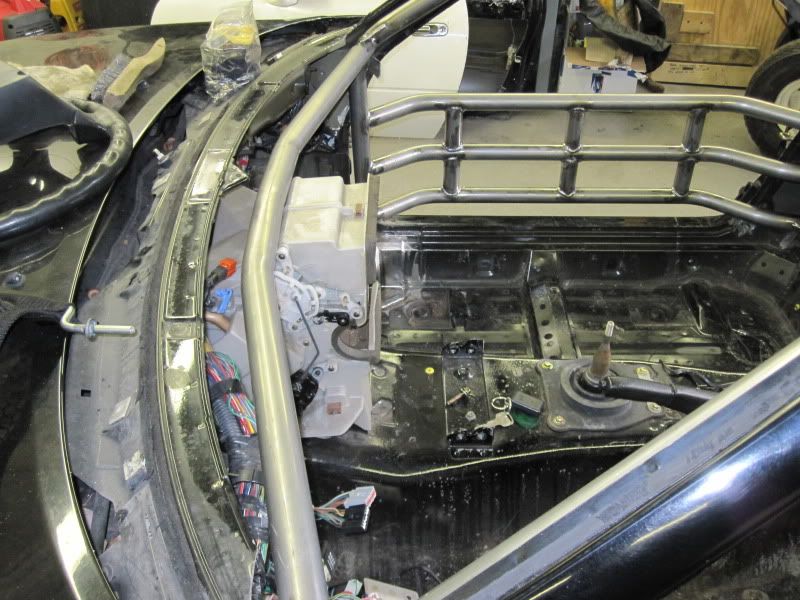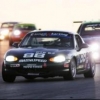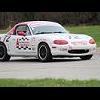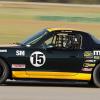
Dash Bar Location
#1

 Posted 04-21-2011 06:41 PM
Posted 04-21-2011 06:41 PM

Thanks- and Happy Easter
#2

 Posted 04-21-2011 07:09 PM
Posted 04-21-2011 07:09 PM

J~








#3

 Posted 04-21-2011 07:49 PM
Posted 04-21-2011 07:49 PM

How far is your guy into it? If he's not started to cut or bend tubing you may want to get a kit and have him install it. From the sounds being that unfamiliar with the class if you guys aren't absolutely certain, at inspection time he might do something that prohibits getting the car a book, or gets a DQ later (for example with the dash structure).
#4

 Posted 04-21-2011 11:40 PM
Posted 04-21-2011 11:40 PM

I like the low design better, because of the smaller moment arm between the door bar and the knee bar. It does not interfere with the driving position at all.
I highly recommend the kit approach with a proven design. If you get the same kit i have, I'll take any measurements you need. Pm me for that.
-tch
Build: www.tomhampton.info
video: vimeo.com/tomhampton
Support: X-Factor Racing
I didn't lose, I just got outspent!



#5

 Posted 04-22-2011 01:57 PM
Posted 04-22-2011 01:57 PM


#6

 Posted 04-26-2011 06:22 PM
Posted 04-26-2011 06:22 PM



www.RaceLabz.com
#7

 Posted 04-27-2011 08:33 AM
Posted 04-27-2011 08:33 AM

On the gray cage, how do you install the defroster ducts? We do run in the rain, after all.
The main purpose of the dash bar is to keep the cage from collapsing into the driver compartment in the event of a "T-Bone" type crash. If this happens, the force of impact is taken by the door bars and is applied to the front down tube. That force is then applied to the dash bar, then accross the car. Thus creating a "crush prrof" zone for the driver. In both cages above, the dash bar is 8-10 inches above the point where the door bar joins the front down tube. This creates a colapse point for the cage. Curving the dash bar also adds potential bend points.
The same theroy can be applied to where the "harness" bar joins with the main hoop. This is only visable in the yellow cage photos.
I will readily admit, that I am talking about worst case scenario crashes here. I am sure that both of these designs would work perfectly well in 99% of the incedents that we see. I would feel safe driving either of the cars, so do not jump on me too bad.
Dave
Dave Wheeler
Advanced Autosports, the nations most complete Spec Miata shop
Author, Spec Miata Constructors Guide, version 1 and 2.0
Building Championship winning cars since 1995
4 time Central Division Spec Miata Champion car builder 2012-2013-2014-2017
Back to Back June Sprints Spec Miata 1-2 finishes 2016 and 2017
5 time June Sprints winner in Mazda's
6 Time Northern Conference Champion Car Builder
2014 SCCA Majors National point Champion car builder
2014 SCCA Runoffs winner, T4 (Bender)
2014 Central Division Champion, ITS (Wheeler)
2013 Thunderhill 25 hour winning crew chief
2007 June Sprints winner, (GT1, Mohrhauser)
Over 200 race wins and counting.
www.advanced-autosports.com
dave@advanced-autosports.com
608-313-1230





#8

 Posted 04-27-2011 08:53 AM
Posted 04-27-2011 08:53 AM

#9

 Posted 04-27-2011 09:40 AM
Posted 04-27-2011 09:40 AM

The main purpose of the dash bar is to keep the cage from collapsing into the driver compartment in the event of a "T-Bone" type crash. If this happens, the force of impact is taken by the door bars and is applied to the front down tube. That force is then applied to the dash bar, then accross the car. Thus creating a "crush prrof" zone for the driver. In both cages above, the dash bar is 8-10 inches above the point where the door bar joins the front down tube. This creates a colapse point for the cage. Curving the dash bar also adds potential bend points.
The same theroy can be applied to where the "harness" bar joins with the main hoop. This is only visable in the yellow cage photos.
+1 That's why I bought the cage I did.
-tch
Build: www.tomhampton.info
video: vimeo.com/tomhampton
Support: X-Factor Racing
I didn't lose, I just got outspent!



#10

 Posted 04-27-2011 10:36 AM
Posted 04-27-2011 10:36 AM


#11

 Posted 04-27-2011 10:42 AM
Posted 04-27-2011 10:42 AM

#12

 Posted 04-27-2011 11:51 AM
Posted 04-27-2011 11:51 AM


#13

 Posted 04-27-2011 12:21 PM
Posted 04-27-2011 12:21 PM

wheel
1 user(s) are reading this topic
0 members, 1 guests, 0 anonymous users




 Sign In
Sign In Create Account
Create Account



 Back to top
Back to top Report
Report







